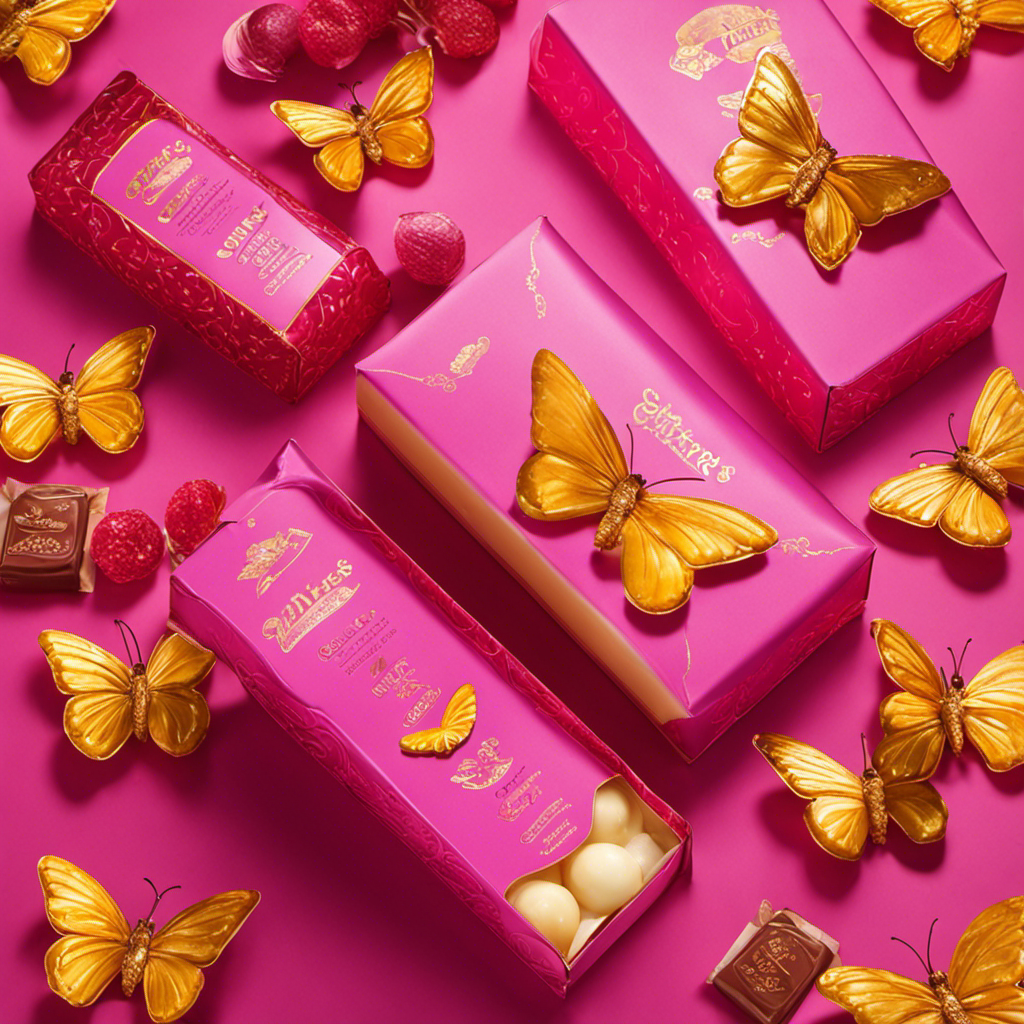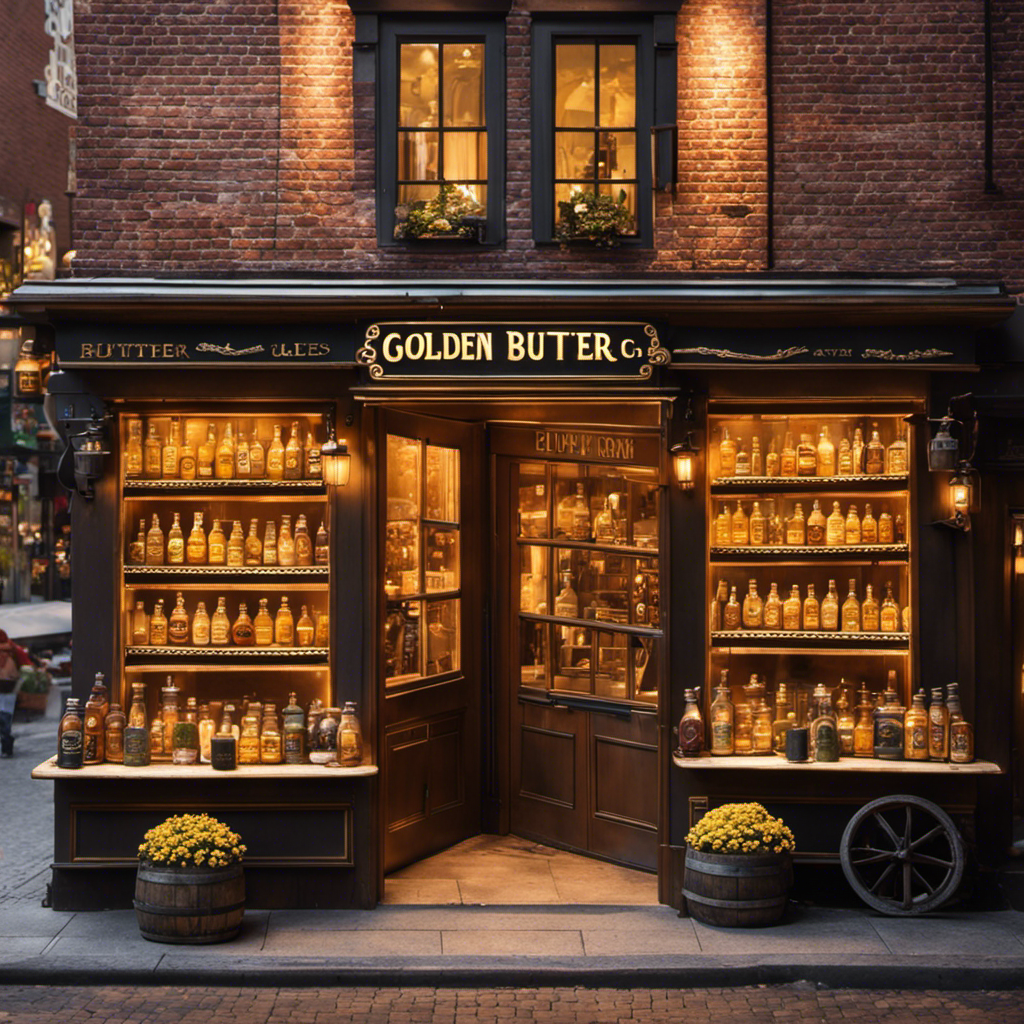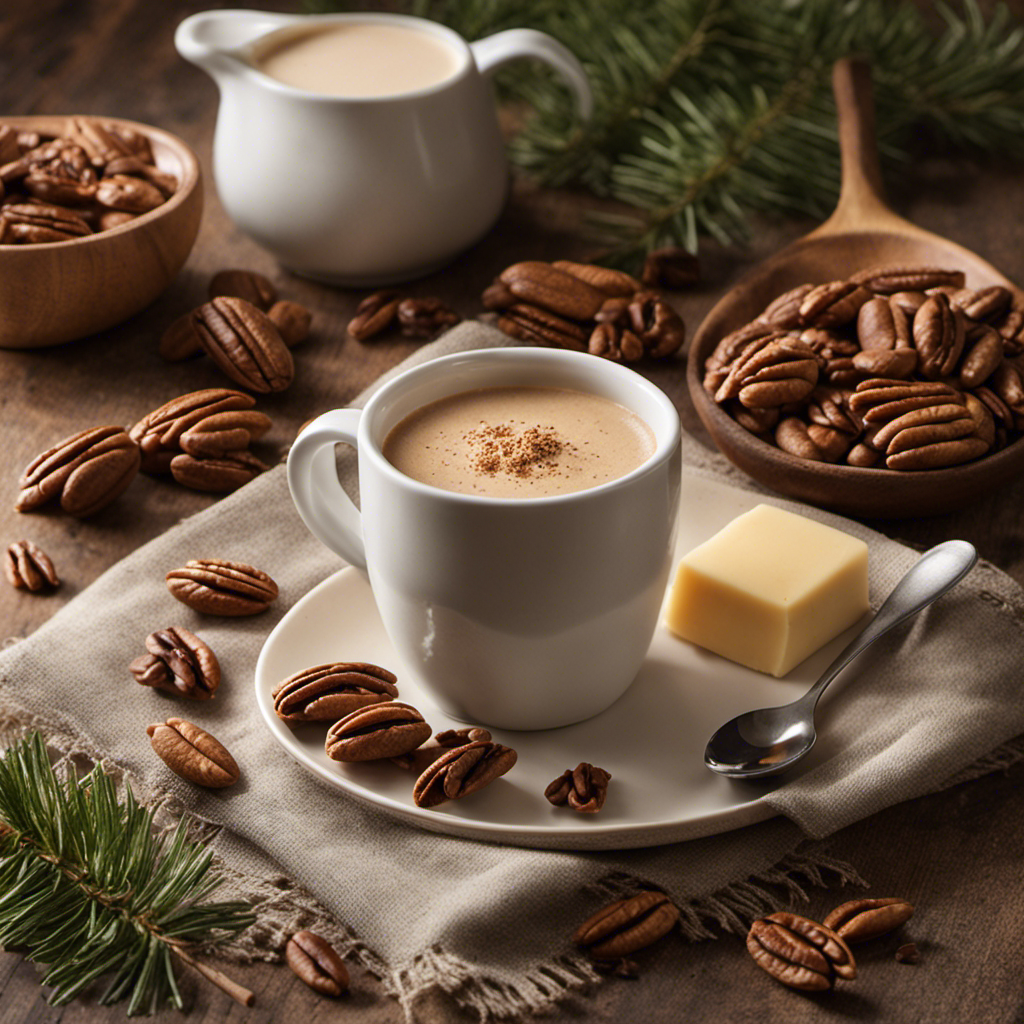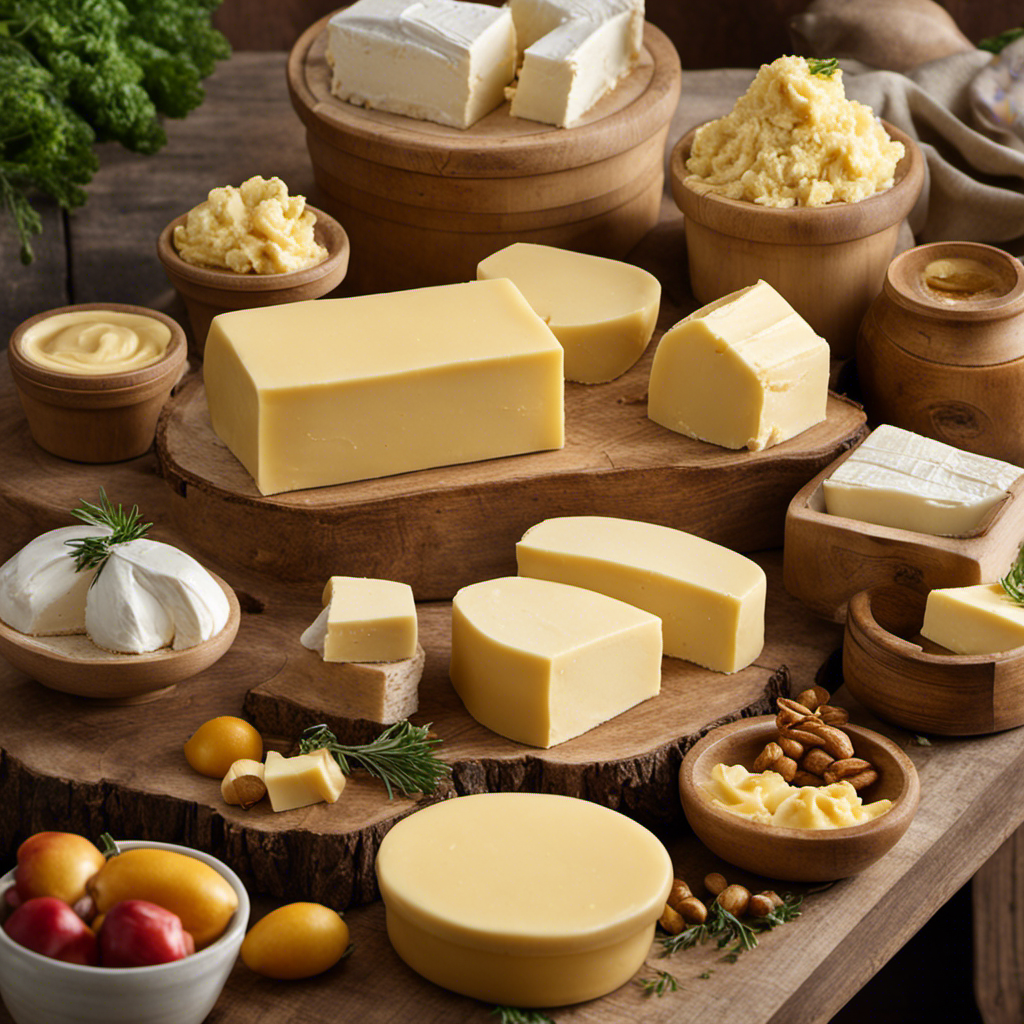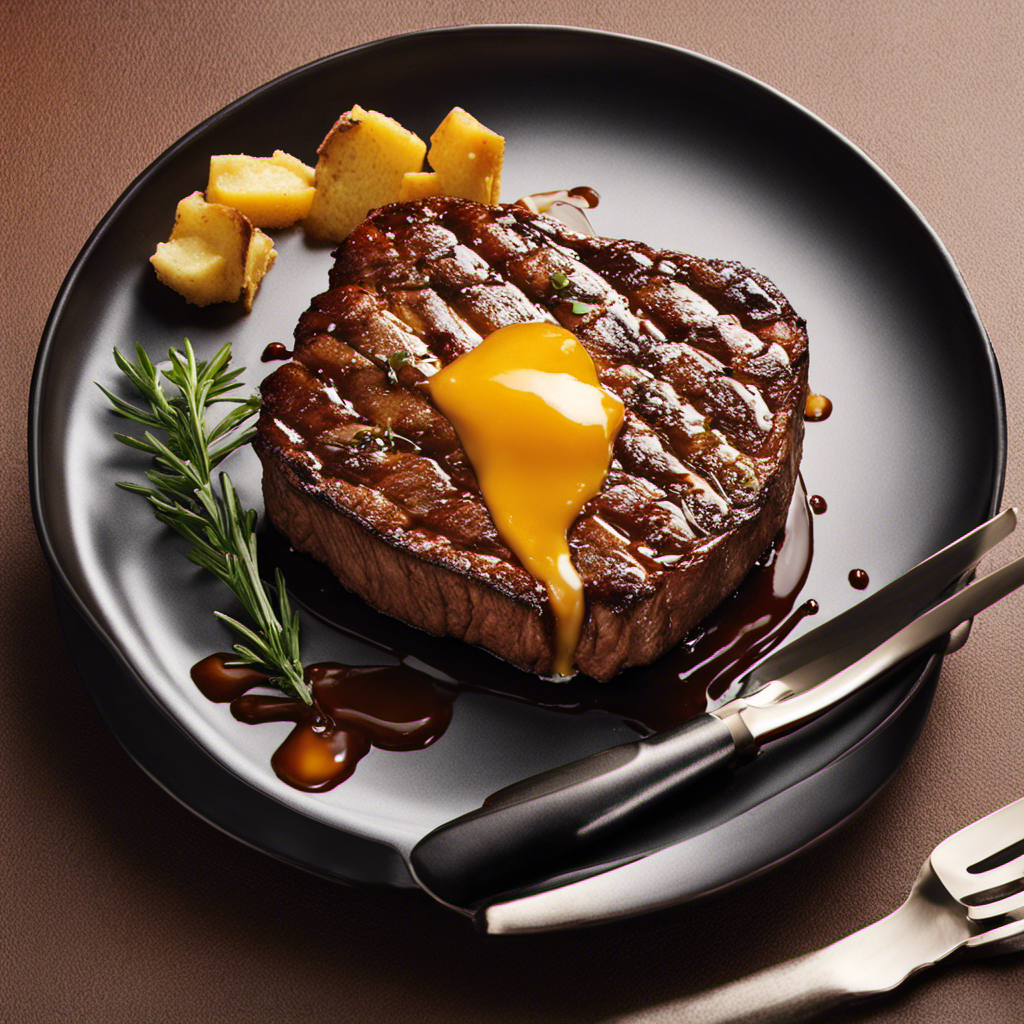For weeks, I’ve had a strong desire for Zitner’s Butter Krak, but it was nowhere to be found. You can imagine how thrilled I was when I came across a neighborhood grocery store carrying it on their shelves!
Turns out, there are several places where you can get your hands on this delicious treat. From online retailers to specialty candy shops, farmers markets to Zitner’s Factory Outlet, and even seasonal pop-up shops, there are plenty of options to satisfy your Butter Krak cravings.
Let me guide you through all the places where you can buy this irresistible treat.
Key Takeaways
- Zitner’s Butter Krak can be purchased at local grocery stores, online retailers, specialty candy shops, and farmers markets.
- Buying Zitner’s Butter Krak online provides the benefits of accessing customer reviews, choosing delivery options, convenience, cost-effective shipping methods, and assurance of a high-quality product.
- Visiting seasonal pop-up shops offers advantages such as availability of limited-time flavors, support for local businesses, discovery of exclusive products, unique offerings, and the chance to try new treats.
- When buying Zitner’s Butter Krak online, factors to consider include reading customer reviews, comparing prices and delivery options, checking for discounts or promotions, ensuring secure payment methods, and confirming the authenticity of the online retailer.
Local Grocery Stores
You can find Zitner’s Butter Krak at your local grocery stores. These stores are not only convenient, but they also support local farmers and neighborhood markets.
When you purchase Zitner’s Butter Krak, you are not only getting a delicious treat, but you are also supporting the local community. Local farmers work hard to provide fresh ingredients for Zitner’s Butter Krak, ensuring that you get the best quality product.
By buying from neighborhood markets, you are contributing to the growth and sustainability of small businesses. These markets often feature a variety of local products, allowing you to discover other hidden gems from your community.
Online Retailers
When it comes to finding the best online options for buying groceries, price and availability are two key factors to consider. Online retailers offer a wide range of choices, allowing you to browse through different brands and compare prices easily.
Additionally, the convenience of online shopping means that you can access these options anytime and have your groceries delivered right to your doorstep.
Best Online Options
There’s plenty of great online options for purchasing Zitner’s Butter Krak. If you’re looking to satisfy your sweet tooth, here are some top choices:
-
Amazon: With a wide selection of Zitner’s Butter Krak flavors, Amazon offers convenience and reliable shipping options.
-
Walmart: Known for its competitive pricing, Walmart provides a seamless online shopping experience for Zitner’s Butter Krak lovers.
-
Zitner’s official website: The best way to guarantee authenticity and freshness is to order directly from the source. Zitner’s website offers a user-friendly interface and a variety of shipping and delivery options.
When it comes to making a purchase online, it’s always helpful to read customer reviews. They can provide insight into the quality of the product and the overall shopping experience. Additionally, be sure to check the shipping and delivery options to ensure your Zitner’s Butter Krak arrives in a timely manner.
Price and Availability
If you’re on a budget and looking for the best deal, checking out different online retailers is a smart move. When it comes to Zitner’s Butter Krak, prices can vary at different local stores. To find the best price, I recommend doing a comparison of prices at different stores in your area.
This can easily be done by visiting their websites or calling them directly. Additionally, keep an eye out for discounted or promotional offers for Zitner’s Butter Krak. Retailers may run special promotions or offer coupons that can help you save money. By staying informed and being proactive, you can find great deals on this delicious candy.
Now, let’s explore specialty candy shops and what they have to offer.
Specialty Candy Shops
You can find Zitner’s Butter Krak at specialty candy shops. These delightful treats offer a unique twist on traditional candies, with their distinct flavors and artisanal candy making techniques.
Here’s why you should give them a try:
-
Mouthwatering flavors: Zitner’s Butter Krak comes in a variety of flavors that are sure to satisfy any sweet tooth. From classic milk chocolate to indulgent peanut butter and even exotic options like salted caramel, there’s a flavor for everyone.
-
Handcrafted perfection: Each piece of Zitner’s Butter Krak is carefully made using traditional artisanal candy making techniques. The result is a confectionary masterpiece that is perfectly balanced in texture and taste.
-
A nostalgic treat: Zitner’s Butter Krak has been delighting candy lovers for generations. The rich history and attention to detail make these candies a nostalgic treat that brings back memories of simpler times.
Farmers Markets
Check out the variety of fresh produce and local goods available at your nearest farmers market. Supporting local farmers has numerous benefits, both for you and your community. By buying directly from farmers, you can enjoy the freshest, most flavorful produce while also reducing the carbon footprint associated with long-distance transportation. Additionally, supporting local farmers helps to strengthen the local economy and preserve agricultural land.
To navigate farmers markets effectively, here are a few tips:
- Come prepared with reusable bags and cash, as some vendors may not accept credit cards.
- Take a walk around the entire market before making any purchases to see what’s available and compare prices.
- Ask questions! Farmers are usually more than happy to share information about their products and farming practices.
- Don’t be afraid to try something new. Farmers markets often offer unique and seasonal items that you may not find at your local grocery store.
Overall, visiting farmers markets is a great way to support local farmers and enjoy the freshest, most delicious produce available in your area. So grab your reusable bags and head to your nearest market for a truly rewarding shopping experience.
| Fresh Produce | Local Goods |
|---|---|
| Fruits | Artisanal breads |
| Vegetables | Homemade jams |
| Herbs | Handcrafted soaps |
| Organic eggs | Locally roasted coffee |
Zitner’s Factory Outlet
When it comes to finding Zitner’s Butter Krak, it’s important to consider the nearby grocery store availability and online purchasing options.
Living in a busy city, I have the convenience of several grocery stores within walking distance that carry Zitner’s products.
However, for those who may not have a grocery store nearby or prefer the convenience of online shopping, Zitner’s also offers online purchasing options through their website or other online retailers.
Nearby Grocery Store Availability
There’s a grocery store nearby where you can find Zitner’s Butter Krak. This delicious treat is made with locally sourced ingredients, supporting local farmers and small businesses. Here are three reasons why you should try Zitner’s Butter Krak:
-
Freshness: The grocery store receives regular deliveries of Zitner’s Butter Krak, ensuring that you always get a fresh and satisfying snack.
-
Variety: The store offers a wide range of Zitner’s Butter Krak flavors, from classic milk chocolate to exciting seasonal options.
-
Convenience: With the grocery store’s convenient location, you can easily stop by and pick up your favorite Zitner’s Butter Krak whenever you’re craving a sweet treat.
Online Purchasing Options
You can easily get your hands on Zitner’s Butter Krak by ordering it online. This delicious treat is a favorite among chocolate lovers, and with good reason. The rich, creamy butter filling is encased in a smooth, decadent chocolate shell, creating a perfect balance of flavors.
When purchasing online, you have the advantage of reading customer reviews and ratings to ensure you are getting a high-quality product. Additionally, online retailers often offer various delivery options and fees, allowing you to choose the most convenient and cost-effective shipping method for you.
So why wait? Indulge in the irresistible taste of Zitner’s Butter Krak by ordering online today.
And if you prefer a more hands-on shopping experience, keep reading to learn about the seasonal pop-up shops that may be coming to your area.
Seasonal Pop-up Shops
I’ll check out the seasonal pop-up shops to see if they carry Zitner’s Butter Krak. These limited-time shops are known for their unique offerings and exclusive products. Here are three reasons why you should consider visiting them:
-
Popularity of Seasonal Flavors: Seasonal flavors like Zitner’s Butter Krak are highly sought after by chocolate enthusiasts. These flavors are only available for a limited time, adding a sense of excitement and anticipation.
-
Benefits of Supporting Local Businesses: By shopping at these pop-up shops, you are supporting local businesses and the community. These shops often feature products from local artisans and entrepreneurs, providing them with a platform to showcase their creations.
-
Exclusive Products: Pop-up shops often carry hard-to-find or limited edition items that you won’t find elsewhere. This makes it a great opportunity to discover new and unique treats, like Zitner’s Butter Krak.
Frequently Asked Questions
What Are the Ingredients Used in Zitner’s Butter Krak Candy?
Zitner’s Butter Krak candy is made with a combination of butter, sugar, corn syrup, and chocolate. It is a delightful treat that can be found in select stores or purchased online.
Are There Any Other Flavors of Zitner’s Candy Available Besides Butter Krak?
Yes, there are other flavors of Zitner’s candy available besides Butter Krak. Some popular retailers for Zitner’s Butter Krak include local candy stores, online retailers, and specialty shops.
Can Zitner’s Butter Krak Be Purchased in Bulk or Wholesale Quantities?
Yes, Zitner’s Butter Krak can be purchased in bulk or wholesale quantities. They offer bulk pricing and wholesale distribution options, making it convenient for those looking to buy larger quantities of this delicious candy.
Are There Any Dietary Restrictions or Allergen Information for Zitner’s Butter Krak?
There are no specific dietary restrictions or allergen information available for Zitner’s Butter Krak. However, it is always recommended to check the product packaging or contact the manufacturer for the most accurate and up-to-date information.
How Long Does Zitner’s Butter Krak Candy Typically Stay Fresh For?
To keep Zitner’s Butter Krak candy fresh for longer, store it in a cool, dry place away from direct sunlight. You can also try enjoying it melted and drizzled over ice cream or baked into cookies for a delicious twist.
Conclusion
In conclusion, finding Zitner’s Butter Krak is as easy as finding a needle in a haystack…if the needle was made of pure deliciousness!
From local grocery stores to online retailers, specialty candy shops to farmers markets, the options are endless.
And let’s not forget about the holy grail of Zitner’s Butter Krak: their factory outlet and seasonal pop-up shops. You’ll feel like a kid in a candy store, surrounded by the sweetest treats imaginable.
So go ahead, indulge in the buttery, crunchy goodness that is Zitner’s Butter Krak. Your taste buds will thank you.
